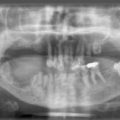Measurement and standardization of dose
We have seen that when photons interact in matter, an energy pathway is initiated by which energy is transferred to the matter via emission of charged particles which cause ionization and excitation of atoms of the matter. The energy is eventually manifest as heat or as some form of internal potential energy of electrons and atoms within the matter (e.g. chemical bonds, raised electron energy levels).
Systems of detecting radiation utilize specific parts of this energy pathway. Some systems seek to determine energy deposited in matter by measuring the temperature rise (termed calorimetry). Other detection systems look at chemical changes generated by irradiation of the matter (chemical dosimetry), or utilize long-lived excited electron states (e.g. thermoluminescent dosimetry). Still other systems measure the ionization produced by the charged particles in order to calculate the energy transferred to those particles (ionization chamber dosimetry).
This section describes the systems adopted for the measurement and standardization of absorbed dose that underpin clinical practice. Later sections consider other methods of radiation detection and measurement, including other systems for measuring absorbed dose.
Stay updated, free articles. Join our Telegram channel

Full access? Get Clinical Tree




